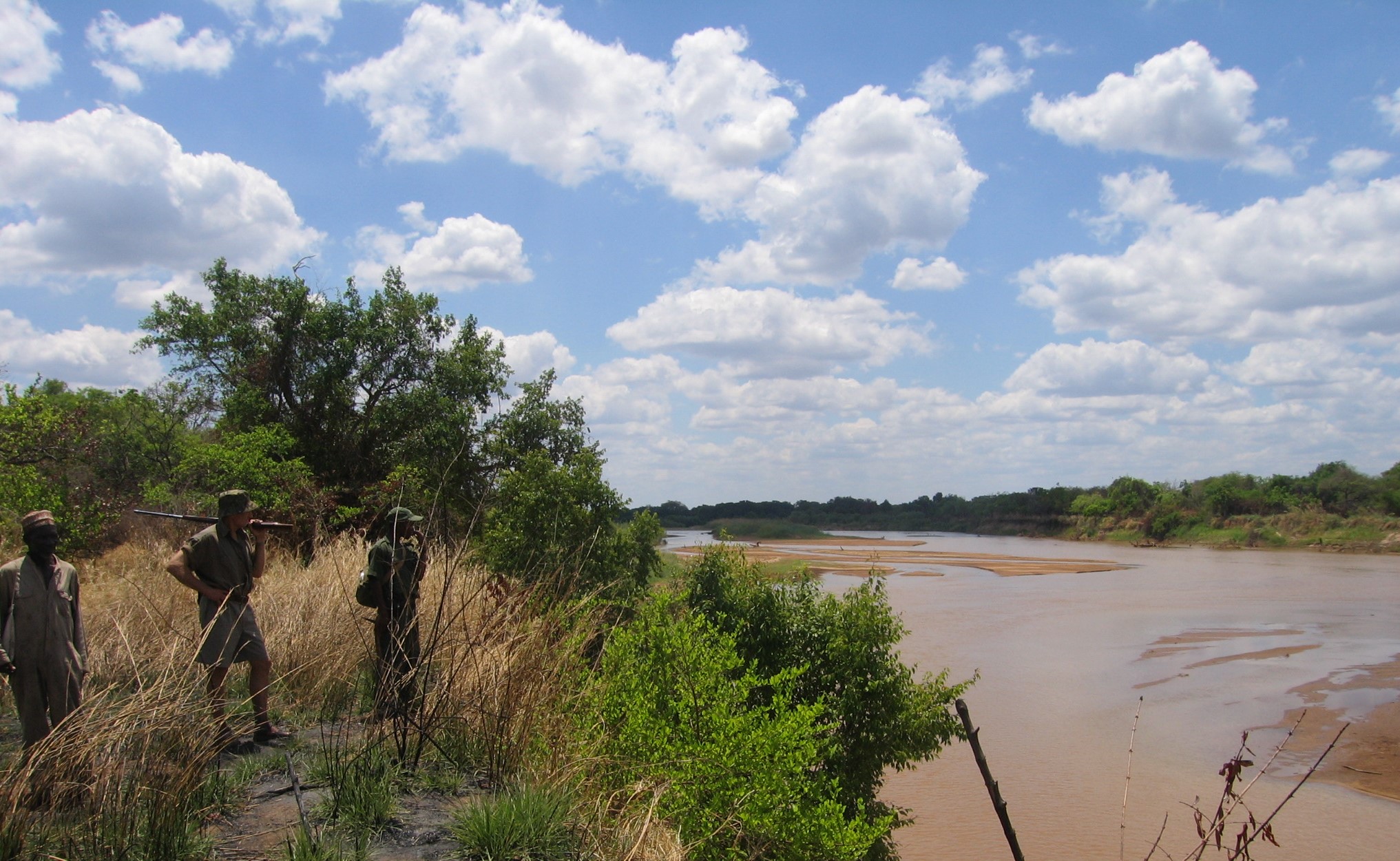You can listen to voice recordiong, or read through the text below.
For days, it was a kind of a destination – “the Ruvuma.” It drew us on, as if it held some reward. But now that we are here, it does not feel like a destination, and there is no reward. It is just part of the bush. We could actually wade through with our packs balanced on our heads and just wander on, through more trackless wilderness.
To civilisation and its bureaucrats, it is a border, with Tanzania. But in this remote wilderness it is just a place where a large river flows. River dwellers, hippos and crocodiles and otters live here, and bush dwellers descend the steep banks to drink. For us the closest it got to a destination was a place where we dropped our loads and sat down in the shade of a wild fig to rest and stare over the chocolate water slipping by.
Upstream, to the west, the odd bush village nudge the river bank; still further west the red scar of a road buts south from the rudimentary ferry, to Lichinga. Along it, little villages cling like suckling piglets. It was from one of these, on the way in, where old Kgalilaga was fortuitously encountered, and promptly recruited. He was the village headman, bush man, and speaker of rudimentary English and Fanagolo – learnt as a young man, partly in Malawi and partly working on the South African mines.
Still further west, the maps tell, the land rises to hilly country and then to the mountains that seam the Great Rift Valley. These are rough badlands where artisanal miners work ancient gold diggings, Kgalilaga told wide-eyed. Finally, after some two hundred kilometres, the earth plunges into the Great Rift Valley and Lake Niassa, where “many people” live.
But Eastwards… Eastwards the wilderness stretches towards the Indian Ocean, unbroken for untold kilometres. There, very few people, if any, dwell. Even Kgalilaga, with many years of bush roaming behind him, had heard only rumours about it – the land of the Makonde, he had muttered darkly. Word had it that they were a fierce and aggressive people that filed their teeth to fangs and feasted on their enemies.
Needless to say, this is the direction we headed.
The land is mostly flat, scarred by deep-cut ravines that drain their summer floods into the Ruvuma. Here and there, massive basalt domes rise silently, like gigantic sleeping tortoises. The bush is mostly miombo, lush and dense along lowlands, rivers and gullies. These thickets are the favourite haunts of buffalo, leopard, bushbuck, reedbuck, waterbuck, and smaller antelope.
In places the land lifts a little and the vegetation is sparser, but it is still ample for eland, hartebeest, sable, zebra, and buffalo. Across it all roam elephant and the big predators – lions, wild dogs, hyenas, jackals and badgers, and many, many more wonderful creatures.
So, at about three o’clock we shouldered our packs and set off eastwards, eager for the brutal and the subtle that awaited us.

Remarkable account of your journey into the deep bush, I really enjoy reading your blog, a very realistic account of your adventures.
Really enjoyed this one Pappa!! My kind of bedtime story :)